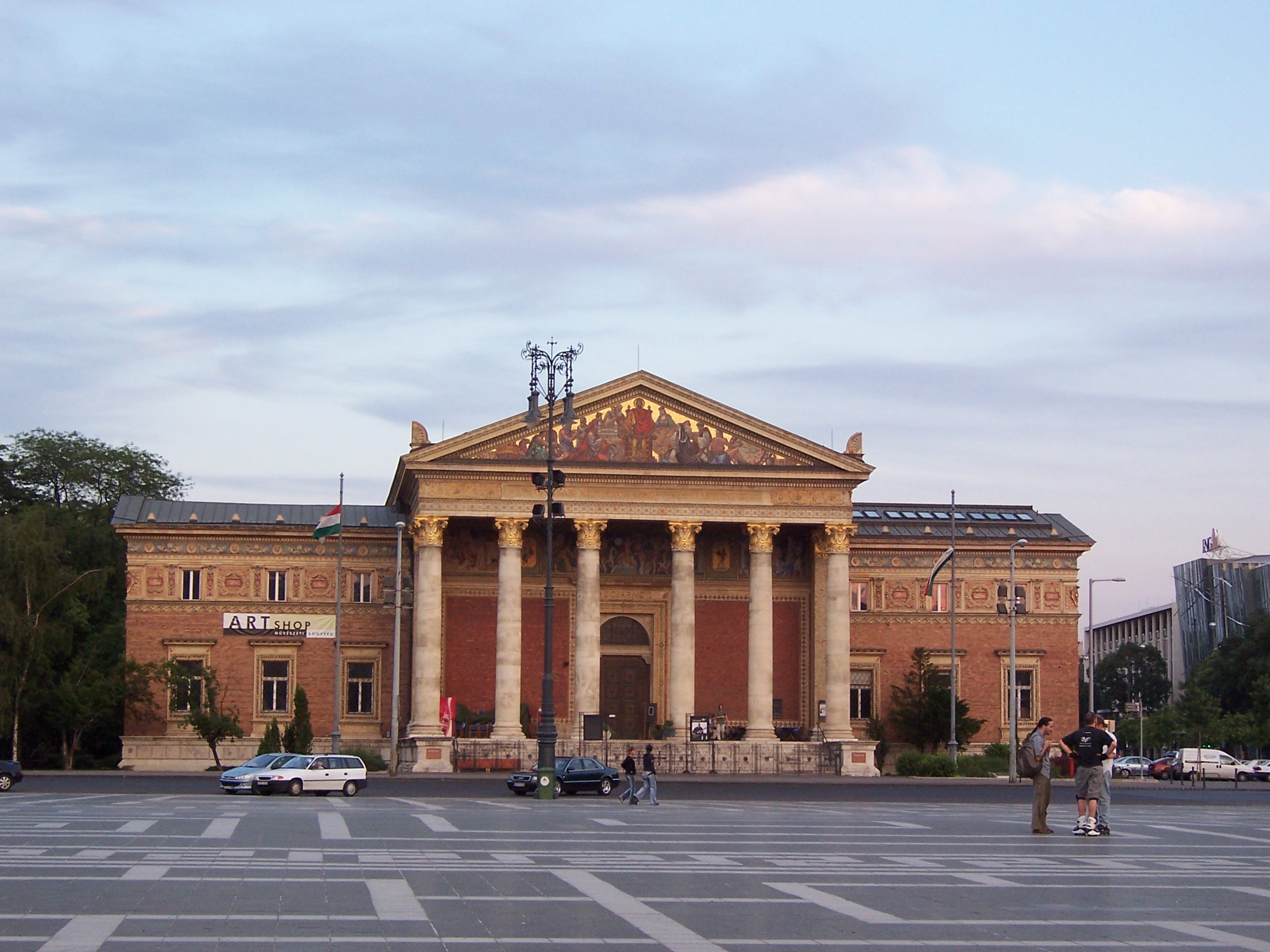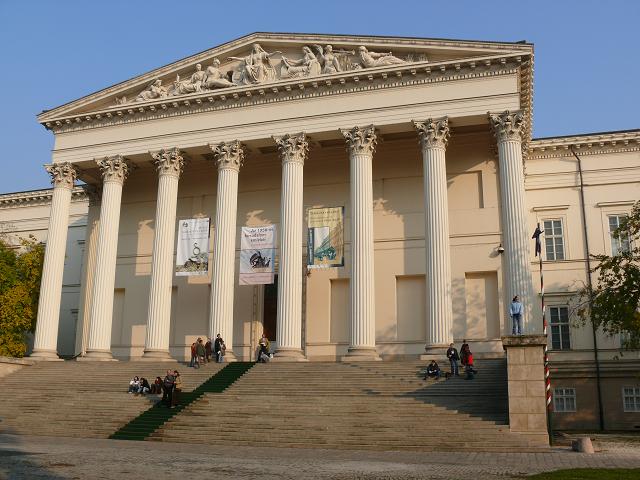|
Ferenc Veress
Ferenc Veress (1 September 1832, Kolozsvár - 3 April 1916, Kolozsvár) was a Hungarian photographer and inventor. Biography He became involved in photography through Baron , an amateur daguerreotypist, whose wife was related to wife. His first solo album featured portraits of notable Transylvanian people. In 1852, he opened his own studio in Kolozsvár. It soon became a gathering place for members of the local creative community; such as the writer, Mór Jókai, the painter, Mihály Munkácsy, the scholar, Sámuel Brassai and the poet, . In 1858, he opened a joint art and photography studio with his friend, the painter György Vastagh. He wrote an article in 1862, for the magazine ''Ország Tükre'' (roughly: "Reflections on the Nation"), suggesting that daguerreotypes should be preserved in museums. Three years later, he became an official photographer for the , but it wasn't until 1874 that the Hungarian National Museum made photographs a part of their collection. In 1880, ... [...More Info...] [...Related Items...] OR: [Wikipedia] [Google] [Baidu] |
Veress Ferenc
Veress is a surname. Notable people with the surname include: *Lajos Veress (1889–1976), Hungarian military officer *Matyas Veress, film editor * Sándor Veress (1907–1992), Hungarian-born Swiss composer *Zsuzsanna Veress Zsuzsanna Veress (born 6 March 1976 in Békéscsaba) is a former Hungarian handball goalkeeper who most recently played for Békéscsabai Előre NKSE. Achievements *Magyar Kupa The Hungarian Cup ( hu, Magyar Kupa) is the Hungarian cup co ... (born 1976), Hungarian handball player * János Veres(s) (1903–1979), a Hungarian internistbr> See also * Veress needle, surgical instrument {{surname, Veress ... [...More Info...] [...Related Items...] OR: [Wikipedia] [Google] [Baidu] |
Imre Mikó
Count Imre Mikó de Hidvég (4 September 1805 – 16 September 1876) was a Hungarian statesman, politician, economist, historian and patron from Transylvania, who served as Minister of Public Works and Transport between 1867 and 1870. He was one of the liberal-oriented, prominent figures of the politics of Transylvania in the 19th century. He functioned as Governor of Transylvania twice (1848 and 1860–1861). He worked tirelessly for the rise of his home in economic, cultural and scientific areas, earning the honorary title of "Széchenyi of Transylvania". Biography He started his political career as an official of the Gubernium (the Government of Transylvania) in 1826, and reached the position of Treasurer in 1847, at the same time he became a leading figure of the liberal opposition in Transylvania. He was appointed interim, then actual Governor during the Hungarian Revolution of 1848. He presided the Székely National Assembly in Agyagfalva (today: ''Lutița, Romania''), wh ... [...More Info...] [...Related Items...] OR: [Wikipedia] [Google] [Baidu] |
Transylvanian Hungarians
The Hungarian minority of Romania ( hu, Romániai magyarok; ro, maghiarii din România) is the largest ethnic minority in Romania, consisting of 1,227,623 people and making up 6.1% of the total population, according to the 2011 Romanian census, the second last recorded in the country's history. Most ethnic Hungarians of Romania live in areas that were, before the 1920 Treaty of Trianon, parts of Hungary. Encompassed in a region known as Transylvania, the most prominent of these areas is known generally as Székely Land ( ro, Ținutul Secuiesc, links=no; hu, Székelyföld, links=no), where Hungarians comprise the majority of the population. Transylvania also includes the historic regions of Banat, Crișana and Maramureș. There are forty-one counties of Romania; Hungarians form a large majority of the population in the counties of Harghita (85.21%) and Covasna (73.74%), and a large percentage in Mureș (38.09%), Satu Mare (34.65%), Bihor (25.27%), Sălaj (23.35%), and C ... [...More Info...] [...Related Items...] OR: [Wikipedia] [Google] [Baidu] |
Hungarian Photographers
Hungarian may refer to: * Hungary, a country in Central Europe * Kingdom of Hungary, state of Hungary, existing between 1000 and 1946 * Hungarians, ethnic groups in Hungary * Hungarian algorithm, a polynomial time algorithm for solving the assignment problem * Hungarian language, a Finno-Ugric language spoken in Hungary and all neighbouring countries * Hungarian notation, a naming convention in computer programming * Hungarian cuisine, the cuisine of Hungary and the Hungarians See also * * {{disambiguation Language and nationality disambiguation pages ... [...More Info...] [...Related Items...] OR: [Wikipedia] [Google] [Baidu] |
1916 Deaths
Events Below, the events of the First World War have the "WWI" prefix. January * January 1 – The British Royal Army Medical Corps carries out the first successful blood transfusion, using blood that had been stored and cooled. * January 9 – WWI: Gallipoli Campaign: The last British troops are evacuated from Gallipoli, as the Ottoman Empire prevails over a joint British and French operation to capture Constantinople. * January 10 – WWI: Erzurum Offensive: Russia defeats the Ottoman Empire. * January 12 – The Gilbert and Ellice Islands Colony, part of the British Empire, is established in present-day Tuvalu and Kiribati. * January 13 – WWI: Battle of Wadi: Ottoman Empire forces defeat the British, during the Mesopotamian campaign in modern-day Iraq. * January 29 – WWI: Paris is bombed by German zeppelins. * January 31 – WWI: An attack is planned on Verdun, France. February * February 9 – 6.00 p.m. – Tristan Tz ... [...More Info...] [...Related Items...] OR: [Wikipedia] [Google] [Baidu] |
1832 Births
Year 183 ( CLXXXIII) was a common year starting on Tuesday (link will display the full calendar) of the Julian calendar. At the time, it was known as the Year of the Consulship of Aurelius and Victorinus (or, less frequently, year 936 ''Ab urbe condita''). The denomination 183 for this year has been used since the early medieval period, when the Anno Domini calendar era became the prevalent method in Europe for naming years. Events By place Roman Empire * An assassination attempt on Emperor Commodus by members of the Senate fails. Births * January 26 – Lady Zhen, wife of the Cao Wei state Emperor Cao Pi (d. 221) * Hu Zong, Chinese general, official and poet of the Eastern Wu state (d. 242) * Liu Zan (Zhengming), Chinese general of the Eastern Wu state (d. 255) * Lu Xun Zhou Shuren (25 September 1881 – 19 October 1936), better known by his pen name Lu Xun (or Lu Sun; ; Wade–Giles: Lu Hsün), was a Chinese writer, essayist, poet, and literary criti ... [...More Info...] [...Related Items...] OR: [Wikipedia] [Google] [Baidu] |
Hungarian Electronic Library
The Hungarian Electronic Library ( hu, Magyar Elektronikus Könyvtár) is one of the most significant text-archives of the Hungarian Web space showcasing a variety of primary and secondary sources. Contains thousands of full-text works in the humanities and social sciences. Topics covered include science, math, technology, arts, and literature. Most texts are in Hungarian, though some have been translated into English English usually refers to: * English language * English people English may also refer to: Peoples, culture, and language * ''English'', an adjective for something of, from, or related to England ** English national ide .... References External links Official website {{Authority control Library 2.0 Hungarian digital libraries Digital humanities projects ... [...More Info...] [...Related Items...] OR: [Wikipedia] [Google] [Baidu] |
Albert Apponyi
Albert György Gyula Mária Apponyi, Count of Nagyappony ( hu, Gróf nagyapponyi Apponyi Albert György Gyula Mária; 29 May 18467 February 1933) was a Hungarian aristocrat and politician. He was a board member of the Hungarian Academy of Sciences, Chairman of from 1921 to 1933, and a knight of the Austrian Golden Fleece from 1921. Early life Albert Apponyi was born on 29 May 1846, in Vienna, where his father, Count György Apponyi, was the resident Hungarian Chancellor at the time. He belonged to an ancient noble family dating back to the 13th century. While other Hungarian aristocrats like István Széchenyi Count István Széchenyi de Sárvár-Felsővidék ( hu, sárvár-felsővidéki gróf Széchenyi István, ; archaically English: Stephen Széchenyi; 21 September 1791 – 8 April 1860) was a Hungarian politician, political theorist, and wri ... or Lajos Batthyány had to learn Hungarian separately in the aristocratic world of the time, Albert Apponyi gre ... [...More Info...] [...Related Items...] OR: [Wikipedia] [Google] [Baidu] |
Hall Of Art, Budapest
The Budapest Hall of Art or Palace of Art, ( Hungarian − ''Műcsarnok Kunsthalle''), is a contemporary art museum and a historic building located in Budapest, Hungary. Description The museum building is on Heroes' Square, facing the Budapest Museum of Fine Arts. The art museum hosts temporary exhibits contemporary art. It operates on the program of German Kunsthalles, as an institution run by artists that does not maintain its own collection. It is an Institution of the Hungarian Academy of Arts. Its government partner is the Ministry of Education and Culture. It has a bookshop, library, and the Műcsarnok Café that overlooks the square. Building The large Neoclassical style structure, designed by architects Albert Schickedanz and Fülöp Herczog, was completed in 1896. It was originally built for millennium celebrations. Its portico is in the Greek Revival style. The three-bayed, semi-circular apse houses a roofed exhibition hall with skylight A skylight (som ... [...More Info...] [...Related Items...] OR: [Wikipedia] [Google] [Baidu] |
Kolozsvár
; hu, kincses város) , official_name=Cluj-Napoca , native_name= , image_skyline= , subdivision_type1 = County , subdivision_name1 = Cluj County , subdivision_type2 = Status , subdivision_name2 = County seat , settlement_type = City , leader_title = Mayor , leader_name = Emil Boc , leader_party = PNL , leader_title1 = Deputy Mayor , leader_name1 = Dan Tarcea (PNL) , leader_title2 = Deputy Mayor , leader_name2 = Emese Oláh (UDMR) , leader_title3 = City Manager , leader_name3 = Gheorghe Șurubaru (PNL) , established_title= Founded , established_date = 1213 (first official record as ''Clus'') , area_total_km2 = 179.5 , area_total_sq_mi = 69.3 , area_metro_km2 = 1537.5 , elevation_m = 340 , population_as_of = 2011 , population_total = 324,576 , population_footnotes= , population_density_km2=1 808 , pop_est_as_of = 2016 , population_est = 321,687 , pop_est_footnotes= , population_metro=411,379 , coordin ... [...More Info...] [...Related Items...] OR: [Wikipedia] [Google] [Baidu] |
Hungarian National Museum
The Hungarian National Museum ( hu, Magyar Nemzeti Múzeum) was founded in 1802 and is the national museum for the history, art, and archaeology of Hungary, including areas not within Hungary's modern borders, such as Transylvania; it is not to be confused with the collection of international art in the Hungarian National Gallery. The museum is in Budapest VIII in a Neoclassical building, purpose-built during 1837–47 by the architect Mihály Pollack. History The Hungarian National Museum traces its foundation to 1802, when Count Ferenc Széchényi set up the National Széchényi Library. This would then be followed a year later by the donating of a mineral collection by Széchényi's wife. This led to the creation of the Hungarian National Museum as a general history and natural history museum, beyond being simply a library. In 1807, the Hungarian National Parliament passed legislation on the new institution and asked the nation to help donate to the museum. The Hungar ... [...More Info...] [...Related Items...] OR: [Wikipedia] [Google] [Baidu] |
György Vastagh
György Vastagh (12 April 1834 in Szeged – 21 February 1922 in Budapest) was a Hungarian portrait and genre painter. Biography His father was a shipping administrator, but had artistic leanings, which influenced György to start painting when he was still a boy. After returning home from fighting in the Hungarian Revolution, his talent was noticed by a piano teacher who lived nearby, and he began taking his first lessons from a local artist. In 1854 he went to Vienna, where he studied at the Academy of Fine Arts and came under the influence of Carl Rahl and Friedrich von Amerling. While there, he mostly produced portraits and religiously themed works. In 1857, he settled in Kolozsvár, shared a studio with his friend, the photographer Ferenc Veress, and got married.Biography of Vastagh, Gy ... [...More Info...] [...Related Items...] OR: [Wikipedia] [Google] [Baidu] |






